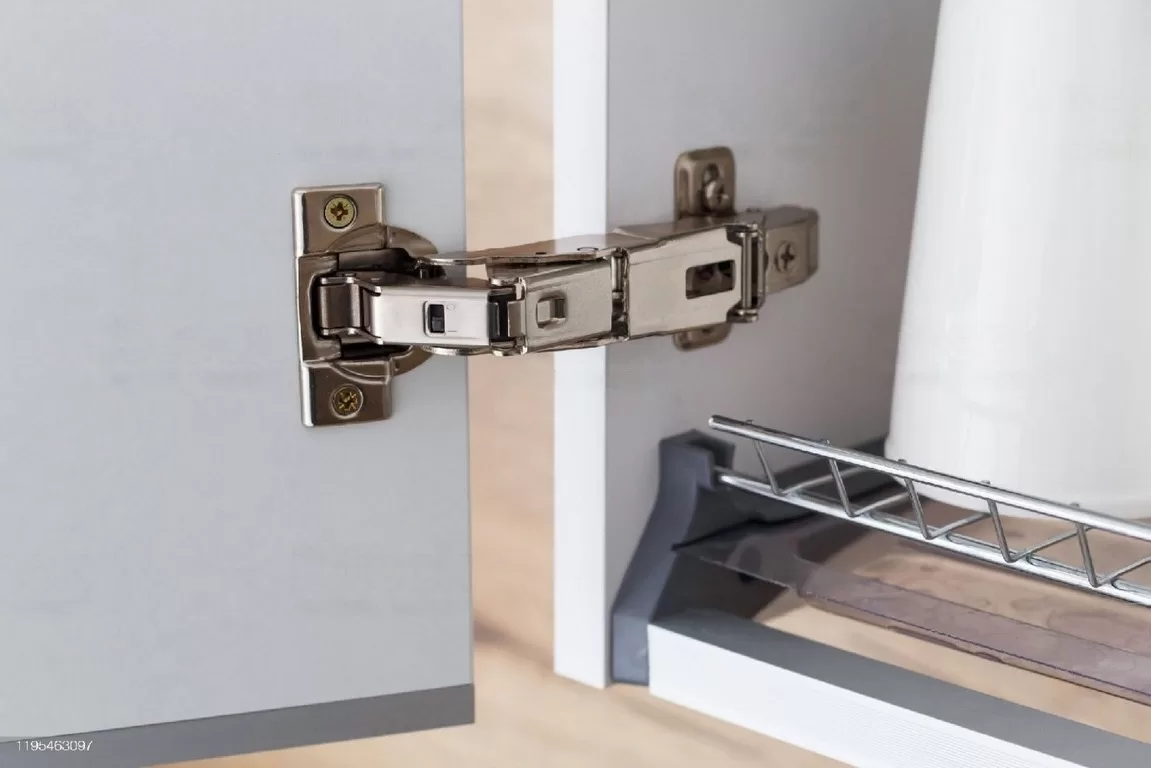When it comes to kitchen cabinets, choosing the right hinges is essential to ensure that they function correctly and last for years.

One type of hinge that is becoming increasingly popular among B2B businesses is the slow-close kitchen cabinet hinge. In this article, we will explore the benefits of using slow-close hinges, as well as provide some tips on how to choose the right hinges for your cabinets.
Slow Close Hinges: What Are They?
Slow-close kitchen cabinet hinges are designed to prevent cabinet doors from slamming shut, which can damage both the doors and the cabinet frames. They work by using a hydraulic mechanism to slow down the door’s closing speed, allowing it to gently close without any impact.
The Advantages of Slow Close Hinges
- Protection of Cabinet Doors: One of the primary benefits of slow-close hinges is that they protect cabinet doors from damage caused by slamming. With slow close hinges, the doors close gently, which prevents them from banging into the cabinet frames and causing chips or dents. This, in turn, helps to extend the life of your cabinets, saving you money on repairs or replacements.
- Safety: Slow-close hinges are also safer than traditional hinges, as they prevent fingers from getting caught between the door and the frame. This is especially important in households with children or pets, as it reduces the risk of injury.
- Noise Reduction: Slow-close hinges also help to reduce noise levels in the kitchen. The hydraulic mechanism ensures that the doors close quietly, which can be a big plus in open-plan kitchens or commercial settings where noise levels need to be kept to a minimum.
- Improved Aesthetics: Slow-close hinges are also aesthetically pleasing, as they eliminate the need for unsightly door catches or other types of hardware. This gives cabinets a sleek and modern look, which can be especially beneficial for businesses that want to create a high-end look for their customers.
Read Also:
Choosing the Right Hinges
When it comes to choosing the right hinges for your kitchen cabinets, there are several factors to consider. These include the size and weight of your cabinet doors, the style of your cabinets, and your budget.
- Size and Weight: It’s important to choose hinges that are appropriate for the size and weight of your cabinet doors. If your doors are particularly heavy, you may need to choose a stronger hinge that can support the weight.
- Style: Slow-close hinges come in a range of styles, including concealed hinges, visible hinges, and European hinges. The style you choose will depend on the look you want to achieve and the type of cabinet you have.
- Budget: Slow-close hinges can be more expensive than traditional hinges, so it’s important to consider your budget when making a decision. While you may be tempted to opt for cheaper hinges, it’s worth investing in quality hinges that will last longer and provide better protection for your cabinets.
Small Kitchen Tables
While slow-close hinges are an essential component of kitchen cabinets, they are not the only thing that B2B businesses should consider when designing a kitchen. Small kitchen tables are another essential item that can help to make a kitchen more functional and efficient.
Small kitchen tables are ideal for businesses that have limited space or want to create a more intimate dining experience. They are also perfect for use in commercial kitchens, as they provide a convenient work surface for food preparation and storage.
When choosing a small kitchen table, there are several factors to consider. These include the size of the table, the materials used to construct it, and the style of the table. Size: Small kitchen tables come in a range of sizes, so it’s important to choose one that is appropriate for your space. Consider the number of people who will be using the table and the amount of
space you have available. A table that is too large will take up valuable space and make it difficult for people to move around the kitchen, while a table that is too small may not provide enough surface area for food preparation or dining.
Materials: Small kitchen tables can be made from a variety of materials, including wood, metal, and glass. Each material has its own unique advantages and disadvantages, so it’s important to choose one that suits your needs. For example, a wooden table may provide a warm and inviting feel, while a glass table may be more modern and easy to clean.
Style: Finally, the style of the table should also be considered. Small kitchen tables come in a range of styles, from traditional to contemporary, so it’s important to choose one that complements the overall design of your kitchen.
A table with a simple and classic design may be more versatile and able to match a variety of kitchen styles, while a more unique and eye-catching table may be better suited to businesses that want to make a statement.
In conclusion, slow-close kitchen cabinet hinges and small kitchen tables are both essential components of a functional and efficient kitchen for B2B businesses.
Slow-close hinges provide a range of benefits, from protecting cabinet doors to reducing noise levels and improving aesthetics, while small kitchen tables offer a convenient work surface and dining area for customers.
When choosing these items, it’s important to consider factors such as size, materials, and style to ensure that they meet your specific needs and budget.









